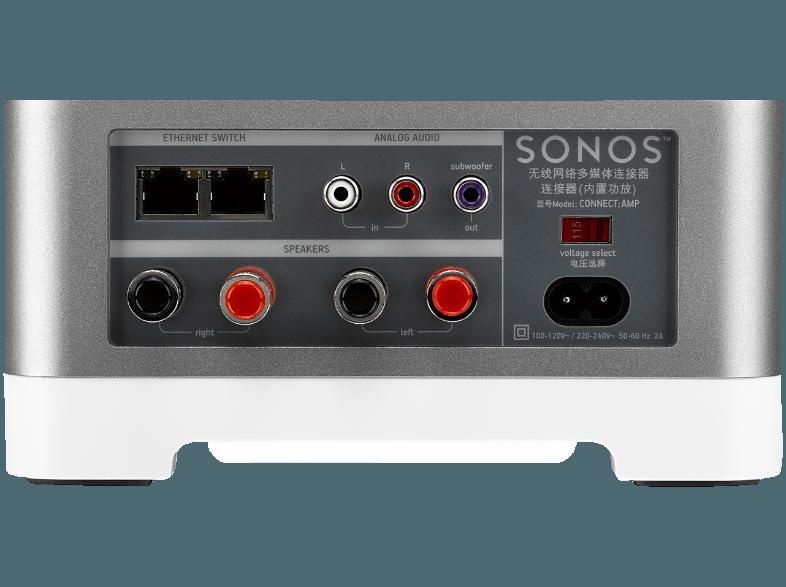
Outside of the bass, you'll find clear definition and robust sound, with a high level of detail. Perhaps the Sonos Sub might be an option - right now, it's one of the best and most accessible subs available. And you can always add the aforementioned subwoofer if you want extra kick down low. More importantly, they were fun - controlled without being chaotic. These elements, and others in this particular region, felt competent and assured. This is particularly true in the mid-bass, where you'll find things like cellos, some guitars, and occasionally kick drums. We don't necessarily mean this as a negative the low-end is clear and detailed, with a good level of control. You may find this useful, if you want some extra bass the Sonos Amp isn't a particular heavy system down low, and doesn't put out particularly punchy bass.
#Sonos connect amp full
The Sonos Amp features a subwoofer output for creating a full 2.1 system. We love our testing room, but unfortunately, our landlord wasn't wild about us cutting holes in the ceiling… You can also use the amplifier to drive ceiling or architectural speakers - although this is one aspect we didn't get to test.

The Sonos Amp boasts a sizeable 125 watts of power, and should be more than enough to drive all but the most hungry speaker systems. While the Sonos Amp was clearly more comfortable driving the bookshelf speakers, the big SVS floorstanders didn't pose too much trouble. In both cases, we didn't have an issue getting enough volume or power. The speakers we used to test the Sonos Amp included a pair of bookshelf speakers, the Audioengine HDP6 ( full review here), as well as a pair of demanding SVS Ultra Towers ( full review here). We found that, no matter what speakers we used, the Amp had absolutely no trouble driving them. Sonos didn't respond to our queries about whether this was RMS or peak power ( those are explained here), but it wasn't an issue. The Sonos Amp has a Class D digital amplifier that pumps out 125 watts per channel at 8 ohms (versus 55 watts for the original Connect:Amp). This gives you a fully wireless hi-fi system, and it is an absolutely splendid way to enjoy music. If you have two passive speakers, like a pair of bookshelf or floorstanding speakers, all you need to do is connect to the Amp with speaker wire. The Sonos Amp's primary use is within a hi-fi setup. You'll be telling your friends about it for years. Trust us: when everything is clicking, the Sonos Amp feels like the Dwight Howard Superman dunk. We'll talk about what it gets wrong below, but for now, let's talk about what it gets right.

Because like Howard, the Sonos Amp is really good at a few things, and a complete mess at everything else. Especially when it came to small things like being nice to teammates and coaches.

He's played on six teams in fifteen years and is generally regarded as one of the NBA's most frustrating players - a guy with all the physical gifts who just couldn't cut it. The Sonos Amp is a bit like Dwight Howard, the basketball player. To see how it stacks up, check out our list of the best stereo amps. In this review, we break down the Sonos Amp's sound, design, packaging and accessories, specs and more.
#Sonos connect amp upgrade
Hence, the new Sonos Amp, a versatile upgrade on the original Connect:Amp designed to power both hi-fi speakers and home theater setups. The company's old Connect:Amp has long been the secret weapon of custom home theater installers, and if you think the guys at Sonos didn't notice this, you're dreaming. Sonos don't just make great wireless speakers.


 0 kommentar(er)
0 kommentar(er)
